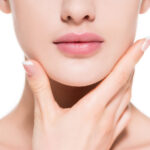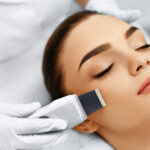Best Ways to Treat Pregnancy Stretch Marks: During and After
Stretch marks in pregnancy are one of the most common cosmetic concerns among child-bearing women. Up to 80% of pregnant women develop stretch marks in the sixth or seventh month.
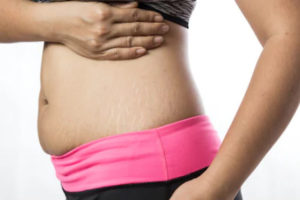 For mothers, the joy that a new baby brings cannot be eclipsed by anything–not even by falling hair and gaining 10 stones–but it’s not wrong to still want to look your best post-pregnancy.
For mothers, the joy that a new baby brings cannot be eclipsed by anything–not even by falling hair and gaining 10 stones–but it’s not wrong to still want to look your best post-pregnancy.
Learn what causes stretch marks during and after pregnancy, how to prevent them, and what to do if you already have them.
Stretch marks in pregnancy: what they are and how to prevent them?
Stretch marks, also known as striae, are narrow bands of red, purple, brown, or pinkish scars in the dermal layer of the skin. That’s right — stretch marks are actually scars, but not from an actual wound.
 As you put on weight and your belly grows to accommodate the baby, your skin stretches considerably, causing collagen and elastin to break. These proteins and fibers are important support structures of the skin; they keep our skin firm, supple, and bouncy. Ruptured elastic fibers produce scars and stretch marks are formed when they heal.
As you put on weight and your belly grows to accommodate the baby, your skin stretches considerably, causing collagen and elastin to break. These proteins and fibers are important support structures of the skin; they keep our skin firm, supple, and bouncy. Ruptured elastic fibers produce scars and stretch marks are formed when they heal.
Stretch marks are not harmful to your health. They gradually fade in time after your baby is born. They may become less noticeable. However, the severity of the marks differ from person to person, and in most cases, they don’t go away completely.
You may develop stretch marks during:
- Pregnancy
- Puberty (growth spurt)
- Sudden weight gain or loss
- Rapid muscle growth (bodybuilding)
Why some people develop stretch marks, and others don’t?
It’s true that not everyone develops these dermal scars, but there’s no definitive reason why some people are at higher risk than others. So far, it has been found that they run in families.
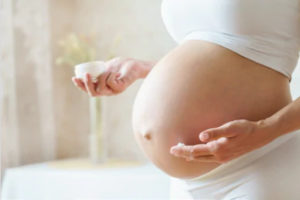 Some experts suggest that fluctuating hormones are to blame. Hormones that rise during pregnancy weaken skin fibers, making them prone to breakage. Those with high cortisol (a type of hormone) levels in the blood may also get stretch marks.
Some experts suggest that fluctuating hormones are to blame. Hormones that rise during pregnancy weaken skin fibers, making them prone to breakage. Those with high cortisol (a type of hormone) levels in the blood may also get stretch marks.
How to prevent stretch marks in pregnancy?
Preventing stretch marks is cheaper than finding an effective treatment, but there’s no guarantee that any of the available methods will work for you. The idea behind effective prevention is to keep your skin healthy and hydrated so it can withstand the abrupt changes during pregnancy.
1. Moisturize your skin
Even the most heavily marketed creams and serums are not really that effective in treating stretch marks.
But a good hydrating cream with hyaluronic acid, Vitamin E, or AHA (alpha hydroxy acid) can keep your skin healthy and reduce the effects of skin fiber damage.
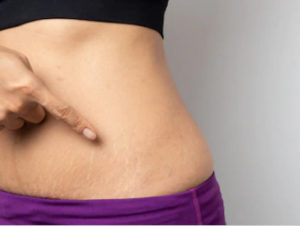 Gently massage these creams on your skin every day to stimulate blood circulation, as this promotes the removal of wastes and free radicals.
Gently massage these creams on your skin every day to stimulate blood circulation, as this promotes the removal of wastes and free radicals.
Increased blood flow also helps nourish the skin by facilitating the transport of nutrients within skin cells.
2. Moisturize your skin
Your skin also needs certain vitamins, minerals, and antioxidants to keep it healthy. You need nutrients that encourage skin growth and strengthens your body’s defense system.
Eat lots of fruits and vegetables that are high in Vitamin C, A, and E. Incorporate whole grains and lean proteins in your diet for a more balanced meal.
The importance of a healthy diet is not only to satisfy nutritional requirements but to keep your weight in check since rapid weight gain causes the skin to overstretch.
3. Don’t skip your workout
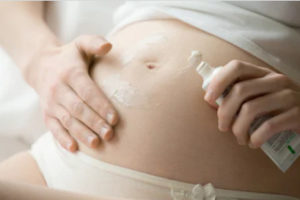 You can still exercise while you are pregnant, as long as you do it with caution. Avoid exercises where falling is likely. Strenuous activities like contact sports are also a big no-no! Walking, swimming, and doing moderate-intensity exercise are recommended during pregnancy.
You can still exercise while you are pregnant, as long as you do it with caution. Avoid exercises where falling is likely. Strenuous activities like contact sports are also a big no-no! Walking, swimming, and doing moderate-intensity exercise are recommended during pregnancy.
Exercise improves blood circulation, which helps keep your skin healthy and elastic to withstand the changes in pregnancy. Make sure to consult your medical provider before engaging in a workout routine.
Treating stretch marks after pregnancy
Stretch marks are easier to treat when they are new. Once they have matured, they would require dermatological procedures or even surgery. There are various products available to get rid of stretch marks, but they have not been proven to be effective.
Most of the time, you need a combination of different products to experience slightly favorable outcomes.
Right now, the only effective treatments for stretch marks are in-office procedures performed by licensed medical professionals and plastic surgeons.
Laser Treatment
Ablative and non-ablative laser therapies are being utilized to reduce the appearance of stretch marks. Laser therapies are less invasive than surgery and have minimal downtime.
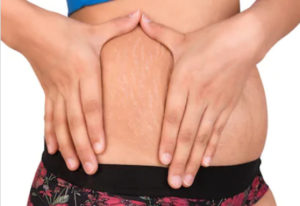 Light-based treatments work by destroying the outer layer of the skin and stimulating collagen regeneration.
Light-based treatments work by destroying the outer layer of the skin and stimulating collagen regeneration.
In return, your body speeds up skin growth and repair, revealing fresh skin tissues that are stronger and smoother in texture. You may experience bruising and redness after the treatment, but these usually resolve within 3-4 days.
Dermaroller Stretch marks Removal
Dermarolling or micro-needling is a popular treatment for skin rejuvenation and works best for scars, stretch marks, and other signs of skin aging. While dermaroller can’t get rid of stretch marks completely, it can significantly reduce the unsightly appearance of raised, reddish or silvery streaks of dermal scars.
You may need several sessions for optimal results, depending on the age and severity of your stretch marks.
Again, new stretch marks (the red or purplish ones) are easier to treat because they still have functioning blood vessels in them so its easier to stimulate collagen production.
Microdermabrasion Skin Resurfacing
Microdermabrasion is another non-invasive procedure that has been found to reduce the appearance of striae. Its mode of action involves the removal of the skin’s top layer to facilitate cellular turnover.
Microdermabrasion does not affect the layer beneath the epidermis so it cannot remove stretch marks completely. However, it can alter the outer layer of the skin, masking the appearance of stretch marks until they become less noticeable.
Whether you have new or older stretch marks, there are various non-invasive treatments that can reduce the appearance of these scars.
You should manage your expectations when looking for an effective non-surgical treatment. Most procedures require several sessions to be effective and the outcome depends on your body’s natural healing ability.
Latest News
- August 25, 2021
- August 25, 2021
- July 21, 2021
- July 20, 2021
- June 21, 2021


